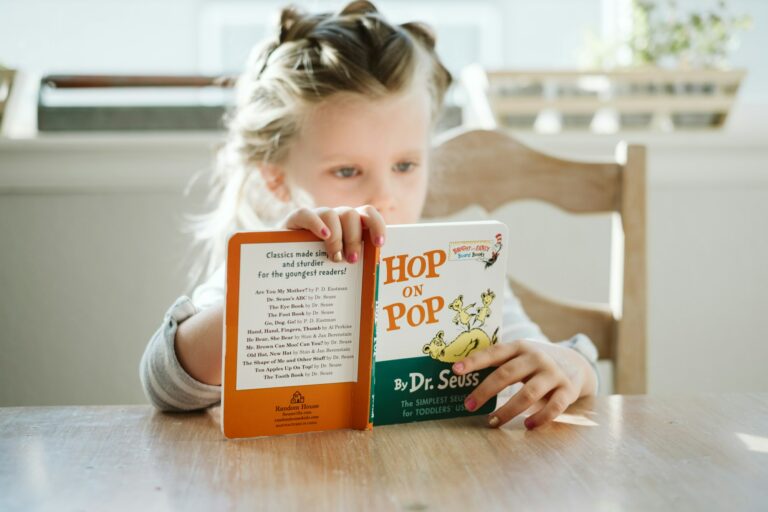Returning to school—a moment both eagerly awaited and tinged with apprehension—emerges as summer fades and routines beckon. Parents often find themselves balancing anticipation with anxiety, pondering whether their preparations are thorough enough or if their child will adapt easily. Will the new sleep schedule take hold, or will breakfast battles erupt once again at dawn? You may ask yourself if back to school preparation really makes a difference for your child’s concentration, health, and happiness. These are genuine concerns. But even in the whirlwind, solutions rooted in child development science and everyday practicality can lighten the load.
With a blend of thoughtful planning and emotional support, families can transform the chaos of transition into an opportunity to nurture independence, resilience, and enthusiasm for learning. Here, discover how to fine-tune routines, safeguard well-being, and foster meaningful connections—all pillars of successful back to school preparation.
Establishing the scientific foundations for back to school preparation
Why does back to school preparation extend far beyond picking up notebooks and labeling lunch boxes? The answer lies deep in neurobiology: sleep hygiene, nutrient-dense meals, and emotional predictability actively shape a child’s cognitive performance and immune function. A stable schedule regulates the production of melatonin and cortisol, two hormones that influence sleep quality, alertness, and stress responses. Consistent routines can reduce behavioral disruptions, support memory consolidation, and minimize separation anxiety, particularly in younger children whose prefrontal cortex—the seat of impulse control and adaptability—is still developing.
Parents frequently underestimate this profound physiological adaptation. Transitioning gradually, reintroducing a regular bed- and wake-up time at least two weeks before school begins, and keeping mealtimes consistent can shore up both biological rhythms (circadian cycles) and emotional security. If mealtime resistance resurfaces, offering balanced snacks rich in complex carbohydrates and proteins stabilizes blood glucose, which is directly tied to mood regulation and sustained attention in class.
Helping children embrace new school milestones
Starting preschool or kindergarten: Navigating new boundaries
Stepping into preschool or kindergarten is a monumental shift. The separation from familiar settings activates a range of emotional responses—excitement, hesitancy, even protest. Social neuroscience tells us that at this age, children rely more on attachment figures to process new experiences, making early conversations about the school environment a vital piece of back to school preparation. Allowing children to participate in selecting a backpack or lunchbox (however trivial it may seem) can spark anticipation and enhance their sense of agency.
Introduce the concept of following directions and group interaction with play-based activities at home—simple tasks like turn-taking or tidying up toys. Practice walking or driving to the school entrance together. Point out key landmarks or explain the drop-off routine with simple, reassuring language. If a child expresses regret or reluctance after those first few weeks, validate their feelings and affirm the predictability that new routines offer rather than focusing exclusively on the positives.
The leap to first grade: Cementing independence and academic discovery
Entering first grade often conjures images of wide-eyed excitement blended with nerves—both for parent and child. This milestone introduces academic cornerstones (phonics, handwriting, foundational math), with neurodevelopment pivoting toward executive functioning skills like organizing work, following multi-step instructions, and managing time. Acknowledge your own possible anxieties—children are remarkably perceptive—and recall that learning curves foster adaptability and grit. Encourage self-management by allowing your child to pack their own bag or tick off a checklist each morning. These micro-moments of independence nourish self-efficacy—a predictor of academic and emotional resilience.
Making the unfamiliar familiar: Getting to know the school environment
Orientation days—if your institution offers them—serve as an invaluable tool. Psychologists stress that exposure to new surroundings reduces amygdala-driven stress responses in the developing brain. No open day? No problem. Walking the perimeter, discussing routines, or mapping out the route on foot can transform uncertainty into familiarity. The concept of environmental predictability is essential; it helps children differentiate between “safe” and “unknown.” Encourage questions. Are they curious about where they will eat lunch? Where the bathroom is? Answer in concrete terms and, if possible, show them the key locations, either virtually or in person.
Everyday life as a springboard for learning
Parents sometimes ponder: Should I nudge study habits mid-summer, or let children bask in unstructured play? Both are essential. Play deconstructs stress and supports neuroplasticity while real-life activities embed academic skills in authentic contexts. Discuss geography during family outings, estimate distances or count steps, or assign age-appropriate kitchen tasks involving measurement. This fusion of real-world experience with intentional learning forms the foundation of experiential education, where skills transfer beyond worksheets.
Supplies and organization: Tools for academic autonomy
The early years: Preschool and kindergarten
Most early childhood centers ask for a simple, lightweight bag—not oversized or needlessly elaborate—capable of carrying a comfort object, communication book, and snack. Allow your child to trial the bag for trips before school starts; this creates positive associations and fosters the idea that “being a student” is something they can be proud of.
Elementary essentials: Structure fuels focus
As children mature, responsibility for their own materials becomes part of back to school preparation. A sturdy, ergonomic backpack with multiple compartments supports load distribution and protects growing spines—a frequent concern in pediatric orthopedics. Let your child select a favorite pencil case or water bottle; ownership boosts accountability. Clear out remnants from the previous school year, organize supplies in labeled boxes, and label each item. These small acts, underpinned by behavioral psychology, reduce “morning chaos” and reinforce executive functioning.
Empowering children: The supply shopping experience
Make shopping for school supplies a shared activity, not a chore. Sorting, categorizing, and choosing colors together can subtly introduce organizational skills and bring joy to the process. Transform familiarity with materials into a source of comfort and excitement.
Refreshing clothing and gear with method and meaning
Begin with a wardrobe audit. Let your child try on clothing from last year and identify what no longer fits. Make a short, focused list to avoid impulse purchases. Scientific literature supports that allowing children to select a designated “first-day outfit” can enhance intrinsic motivation and positive anticipation. Do not overlook the medical importance of properly fitted shoes—ill-fitting footwear is associated with musculoskeletal discomfort and postural changes in growing children. Always prioritize comfort and correct sizing.
Label all gear—including water bottles and lunch containers—with indelible, non-toxic markers to minimize loss and mishaps, a frequent source of frustration for parents and children alike.
Anchoring daily life with routines and rituals
Routines aren’t merely logistical; they are underpinned by chronobiology (the study of biological timing). Start reinstating bedtime and wake-up times incrementally, aiming to align with school schedules at least two weeks in advance. The brain, particularly the hippocampus, thrives on predictability, which fosters emotional regulation and learning readiness.
Evening preparations—packing bags, choosing clothes, reviewing the next day’s events—can reduce cortisol spikes in the morning and prime children for successful transitions. After school, build in a regular time for homework, interleaved with breaks to optimize concentration. Celebrate effort over outcome; praise persistence, not perfection, and avoid comparisons with siblings or classmates. Each trajectory is unique, biologically and emotionally.
Balancing academics, play, and social connections
Extracurricular activities stimulate social interaction and skill-building, yet over-scheduling is linked to elevated stress (as measured by salivary cortisol levels) and behavioral fatigue. Ensure time for unstructured play, rest, and family rituals. Shared calendars help synchronize commitments and deadlines, fostering transparency and autonomy among all family members.
Fostering self-motivation and resilience
Engage your child in honest conversations—what are their hopes for the year? Their worries? Reflecting together on previous successes and difficulties, and setting realistic goals, provides both validation and forward momentum. Displaying goals in a visible spot reinforces persistence as a value.
Breaking down large tasks into manageable steps aligns with evidence-based cognitive behavioral techniques. Regularly check in, not just on academic progress, but on emotional well-being.
Optimizing learning environments: The science of study spaces
Designate a consistent, uncluttered space for learning—a zone free from unnecessary distractions, with access to natural light if possible. Keep essential supplies within arm’s reach. During study sessions, build in brief, timed breaks, a practice supported by research in attention span regulation. Limit screen distractions during focused periods and teach your child to self-organize the space; this scaffolds intrinsic motivation and self-reliance.
Nurturing emotional health and psychological readiness
Start back to school preparation conversations early, normalizing the blend of excitement and anxiety. Use play-acting or walk-throughs to rehearse routines, building confidence and familiarity. Arrange playdates or casual meetings with peers to foster positive social anticipation, mitigating loneliness or isolation.
Avoid focusing solely on achievement; instead, validate courage, curiosity, and the ability to seek help. Equip your child with strategies for emotional expression—using simple feeling words or visual emotion charts.
Setting up for digital literacy and well-being
Digital tools are now essential in back to school preparation. Check all devices in advance, ensuring updates and required software are in place. Teach about password safety, personal information protection, and appropriate screen time—all part of modern digital citizenship. Regular breaks from screens support ocular health and reduce mental fatigue. Encourage your child to back up schoolwork; explain it as safeguarding effort.
Building partnerships and practicing safety
Connect with teachers early, introducing your family and sharing pertinent health or developmental information. Review all school procedures (allergies, pickups, absences). Practice safe commuting, reinforce traffic safety rules, and select backpacks appropriate to your child’s frame. Teach your child how to ask for help—whether trouble arises on school grounds or on the way there.
Tailoring back to school preparation for unique transitions
Some children face additional layers of transition: new schools, recent moves, remote learning, specific medical or developmental needs. Schedule early meetings with school staff and rehearse new routines to reduce ambiguity. For remote learners, construct clear, positive schedules for engagement and breaks. For children with unique health needs, collaborate early with educational and healthcare teams to ensure proper supports and reasonable adjustments, taking advantage of available community resources.
Caring for parents: Structure as self-preservation
Often overlooked, parental rhythm is a linchpin of household stability. Use planners and shared checklists to streamline appointments, shopping, and household chores. Prepare meals and supplies in advance to ease morning congestion. Delegate age-appropriate tasks, cultivating shared responsibility.
Carve out moments for self-care, be it an early morning coffee or evening walk—these brief interludes buffer parental stress and sustain positive family dynamics during busy seasons.
Key Takeaways
- Early, evidence-informed back to school preparation bolsters mental, emotional, and physical well-being for both children and parents.
- Establishing biological and practical routines—bedtimes, meals, wardrobe checks—paves the way for a harmonious adjustment.
- Encouraging autonomy and embracing daily learning moments fosters cognitive and emotional skills beyond the classroom.
- Open family communication, reinforced by balanced screen use and regular check-ins, underpins ongoing resilience.
- Every family’s journey is shaped by individual experiences. Professional guidance and reliable resources are always available to support you. Discover more on how to personalize your preparations—download the Heloa app for tailored advice and complimentary health questionnaires for your child. Celebrate each small step forward in your unique back to school preparation—because every new beginning carries its own promise.
Questions Parents Ask
What steps can help make the first day of school less stressful for my child?
Supporting your child as they approach the first day is important, and a little preparation can go a long way. Start by discussing the day’s plan ahead of time—go over drop-off routines, the schedule, and any changes that might occur. You might try a walk or drive to the school together before classes begin, helping to make the environment more familiar. Preparing school bags, clothes, and a favorite snack the night before can also ease morning tension. Above all, reassure your child that it’s normal to feel a mix of excitement and nervousness. Remain available for questions, listen to their worries, and express confidence in their ability to adapt.
How can I encourage a positive attitude toward returning to school?
Setting a positive tone can have a real impact. Share stories about your own school experiences—emphasizing things you enjoyed or learned. Invite your child to talk about what they look forward to, even small things like seeing friends or using a new notebook. Acknowledge any concerns without minimizing them, and help your child set simple, achievable goals for the first few weeks. Creating small rituals to celebrate new beginnings, such as a special breakfast or choosing a favorite outfit, can also help turn anticipation into enthusiasm.
Is it necessary to update vaccinations before school starts?
Yes, it is important to check that all required vaccinations are current before the new school year. Schools may have specific health requirements to protect all students. If you’re unsure about the schedule, your healthcare provider can guide you and answer any questions. Ensuring your child’s vaccinations are up-to-date helps protect them and their classmates, offering peace of mind for your family as the school year begins.
Further reading:









